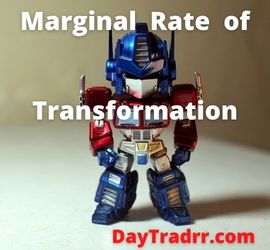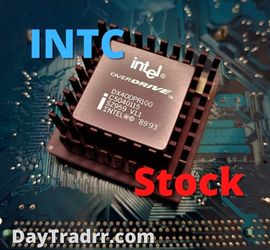What Is an Acquirer in Mergers and Acquisitions?
 In a merger or acquisition, an acquirer is a firm that gains the rights to another company or commercial connection through a financial transaction. These can be mergers, acquisitions, or other types of structured agreements. Acquirers buy out a firm and take over ownership by purchasing a substantial block of the target company’s stock. There are several reasons why a corporation would be interested in purchasing another company.
In a merger or acquisition, an acquirer is a firm that gains the rights to another company or commercial connection through a financial transaction. These can be mergers, acquisitions, or other types of structured agreements. Acquirers buy out a firm and take over ownership by purchasing a substantial block of the target company’s stock. There are several reasons why a corporation would be interested in purchasing another company.
These factors may include reducing competition, developing new competencies or synergies, and accessing new markets. The type and structure of the deal influences acquirer relationships. Corporations can acquire another company through a number of different methods. For example, negotiations and payment of an agreed-upon fee for the right to assume control of another firm and incorporate it into their present business operations. Acquisitions can take the shape of a cash buy-out, a stock purchase, a stock exchange, or a combination of ant of the above.
What is an Acquirer in the Payment Industry?
The term acquirer in the payment industry is a financial institution that acquires the rights to a merchant account. This access allows them to service and manage the merchant’s bank account related to customer electronic payments.
An acquirer, also known as an acquiring financial institution, is a bank that processes and settles a merchant’s daily credit card transactions. In turn, the acquirer then settles these transactions with the card issuer or association. To obtain credit for credit card transactions, merchants must keep and maintain such an account. After settlement and discount costs are subtracted, daily card transaction totals are placed in the merchant’s account. In this manner, a financial institution purchases or acts as an intermediary to assist the credit transaction and pays the merchant for the service, minus a discount charge.
Acquirer – A Closer Look at the Different Types
Corporate Acquirer
The acquirer is the firm that buys another company for a set amount in a corporate acquisition. Two parties normally negotiate and agree on corporate purchases. The final agreement enables an acquiring corporation to completely take over a business and incorporate it into its existing operations. In an acquisition, the acquiring business usually feels that it will profit by purchasing another company and absorbing its useful components while eliminating its ineffective ones. As a result, an acquirer frequently feels it is enhancing the firm it is purchasing. When purchasing a firm in a public corporation, the acquirer will normally notice a short-term reduction in stock price. The decline is generally caused by the transaction’s uncertainty and the premium paid by the acquirer for the acquisition.
Merchant Acquirer
In a merchant acquirer relationship, the acquirer serves as a third-party partner to a merchant. When handling electronic transactions and receiving electronic payments, merchants must work with a financial institution. A merchant acquirer is often a bank service provider that controls electronic deposits of monies sent to a merchant account by clients. A merchant acquirer is sometimes known as a settlement bank. This is because they assist merchant payment transmission and settlement. The merchant acquirer must be notified every time a debit or credit card is used to make a payment for processing and settlement. A merchant acquirer may limit the sorts of payments that can be processed.
A merchant acquirer typically has processing partnerships with a network of suppliers. Partners typically include major processors such as Visa, Mastercard, and American Express. Some merchant acquirers may only have network rights with one branded card processor, limiting the sorts of branded cards that the retailer may accept. An acquirer will charge a merchant a variety of fees, which will be specified in their agreement. Most acquirers charge both a per-transaction and a monthly fee. The acquirer’s per-transaction fees pay the network processing costs. Monthly fees may also be paid to cover various other parts of the account’s upkeep.
Payment acquirer vs payment processor
Merchant acquirers and payment processors are not the same things. This is in spite of the fact that the acquirer was sometimes referred to as “the processor.” Certain banking institutions can act as both the merchant acquirer and the processor. However, there has been a shift in recent years with the fintech boom toward employing independent third-party processors. Payment processors just handle payments. This is as opposed to credit card acquirers, who oversee communications between banks and store monies at various stages.
A processor is, in some ways, an acquirer’s technological arm. It provides technology, authorizes transactions, and may receive transaction settlement information. Further, processors provide technical merchant services such as the process of transmitting funds. However, they do not assume financial accountability for this. That is the responsibility of acquirer banks. The risk departments of acquiring banks decide whether or not to underwrite merchant applications. Payment processors work directly with merchants to receive and process credit or debit card information for transactions. Conversely, acquiring banks work with card networks, including the issuing bank and the merchant, to mediate transactions.
Payment Process – Example
Consider a merchant that wants to accept credit and debit card transactions on their website. To do this, they need a merchant account. To get one, they sign a contract with an acquiring bank.
The acquirer is also known as a credit card bank, acquiring bank, or merchant. It is a financial institution that is licensed as a member of a card association like Visa or Mastercard. The acquirer establishes and manages the merchant’s bank account. Both Visa and Mastercard have laws and lists of compliance standards that applicants must meet before becoming an acquirer. All acquirers may not have network rights from the other major payment processors. As a result, some acquirers only provide a single card that merchants may accept. The acquirer then authorizes or rejects card transactions. Also, it connects to the issuing bank on the merchant’s behalf during the payment process. If the transaction is accepted, the money is sent to the merchant’s account. So, after receiving the card information from the payment gateway, an acquirer handles:
- Authorization — Verifying with the issuer about the validity of the card. Also, whether there is adequate money in the account to execute the transaction.
- Authentication — Verification of the cardholder’s identification is performed after entering the card data before purchase.
Up Next: What Is the Marginal Rate of Transformation (MRT)?
 Marginal Rate of Transformation measures opportunity cost. It shows how many units of one product you need to curtail to make one unit of another. In other words, MRT deals primarily with economic priorities given limited available resources.
Marginal Rate of Transformation measures opportunity cost. It shows how many units of one product you need to curtail to make one unit of another. In other words, MRT deals primarily with economic priorities given limited available resources.
The marginal rate of transformation (MRT) is the number of units or quantity of one good that must be sacrificed in order to generate one unit of another item. It is the number of units of good B that will be foregone in order to create an additional unit of good C. It further assumes the production factors and technology will be maintained and remain unchanged. The MRT may be calculated for a range of different items. However, the rates will vary based on the goods being compared. For example, Item B’s MRT with regard to Item C is generally different from B’s MRT with respect to Item D.




